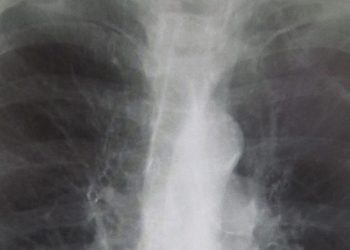Microbe-rich environment associated with lower rates of asthma
1. Dust extracts from Amish households were found to have higher concentrations of endotoxins and allergens compared to extracts from Hutterite households.
2. Children from Amish households have lower rates of asthma compared to those of Hutterite households.
Evidence Rating Level: 2 (Good)
Study Rundown: Asthma represents a substantial health burden, and is estimated to affect over 300 million people worldwide. The development of asthma is related to both genetic and environmental factors. The Amish and Hutterite communities have similar genetic ancestries, but have notable differences in their rates of asthma. Additionally, the Amish utilize traditional farming practices while the Hutterite utilize more industrial farming practices. In this study, researchers immunologically and environmentally profiled Amish and Hutterite school children, and used mouse models of asthma to evaluate the effect of environment on airway responses. Based on phenotypic (i.e., serum IgE, cytokine analysis) and environmental (i.e., dust extract analysis for allergens and endotoxins), the researchers found that Amish children were exposed to a more microbe-rich environment, and had lower rates of asthma. While the sample size of this study is small, the results demonstrate significant differences in immune and asthma profiles in two communities that share common genetic background. These results suggest a strong environmental role in the development of asthma.
Click to read the study, published today in NEJM
Relevant Reading: The genetics of asthma and allergic disease: A 21st century perspective
In-Depth [cross sectional study]: In this study, researchers compared the asthma and environmental profiles of children aged 7-14 years, from Amish households in Indiana (n = 30) and Hutterite households in South Dakota (n = 30). In Amish children, asthma prevalence was 4x lower and allergic sensitization was 6x lower in comparison to the Hutterite group. On phenotypic analysis, Amish children had notably more neutrophils and less eosinophils on peripheral-blood analysis, compared to Hutterite children. Levels of total serum IgE and levels of IgE against commonplace allergens were lower in the Amish group. Despite these differences, genomewide SNP analysis demonstrated remarkable similarity between the two groups. Additionally, Amish children had significantly lower distributions of cytokines (in blood samples treated with lipopolysaccharide) compared to Hutterite children (p < 0.001 by Wilcoxon signed-rank test). To evaluate differences in Amish versus Hutterite environments, researchers sampled airborne dust from 10 Amish and 10 Hutterite homes. They found that endotoxin levels were 6.8x higher in Amish homes. Researchers also intranasally exposed mice to dust extracts from the two groups over a period of 4-5 weeks. The mice exposed to Amish dust had inhibited airway hyperresponsiveness and eosinophilia in bronchoalveolar lavage.
Image: PD
©2016 2 Minute Medicine, Inc. All rights reserved. No works may be reproduced without expressed written consent from 2 Minute Medicine, Inc. Inquire about licensing here. No article should be construed as medical advice and is not intended as such by the authors or by 2 Minute Medicine, Inc.






![Reduced neuronal BRCA1 associated with decreased DNA repair in Alzheimer’s disease [PreClinical]](https://www.2minutemedicine.com/wp-content/uploads/2015/12/DNA_Furchen_edited-75x75.png)
